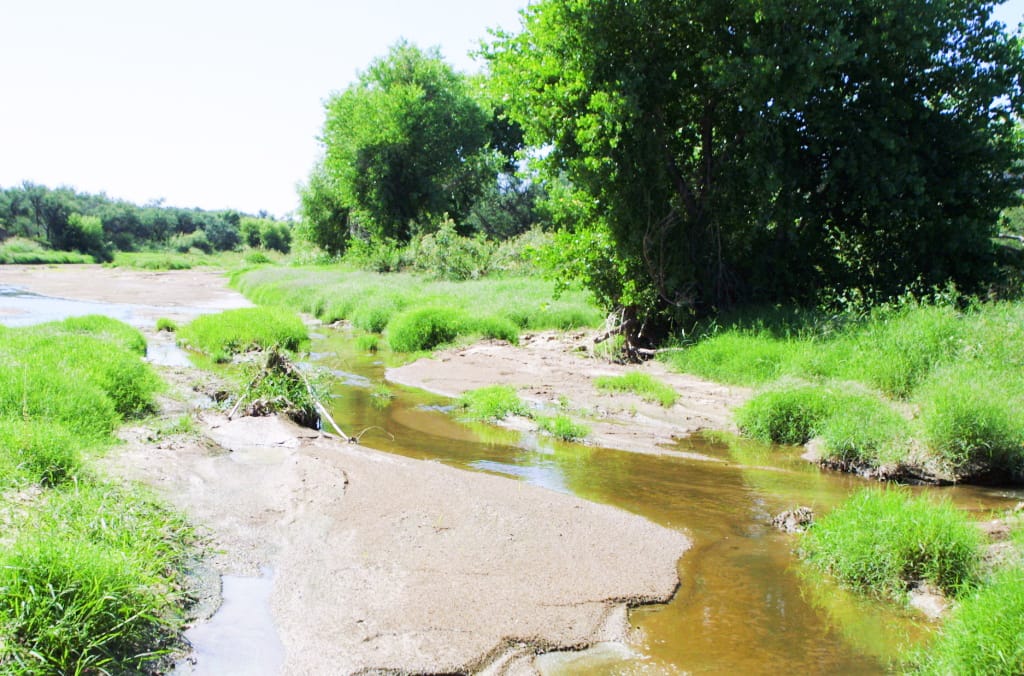Upper Santa Cruz River
By Ian James, | Arizona Republic
For much of the past century, the Santa Cruz River flowed through Tucson only when rainstorms sent muddy runoff coursing down the riverbed. Most of the time, the Santa Cruz sat parched in its channel, looking like a big dry ditch beneath the overpasses.
Then on a hot summer day in 2019, the water came. Released from a pipe, the treated wastewater poured onto the sand and flowed downstream. A transformation began.
At a pair of tents overlooking the river, there were speeches, and a mariachi band played. Afterward, people of all ages walked down a ramp to the water and waded in, celebrating the return of the Santa Cruz.
Ecologist Michael Bogan hadn’t planned to study the resurgence of the Santa Cruz when he pedaled his bike down to the riverbed that day to watch the water roll down the dry channel. But as he snapped photos, Bogan was astonished to see dragonflies and damselflies soaring past and laying eggs in the water.
“This is crazy,” he said he thought to himself. “This is the first day of this ecosystem and they’re already moving in.”
More than two years later, the city is still releasing treated wastewater into the river channel just south of Starr Pass Boulevard near downtown, and a portion of the Santa Cruz that hadn’t flowed continuously since the early 1900s is once again teeming with life: cattails, dragonflies, red-spotted toads, red-winged blackbirds.
Bogan has documented the birth of this new ecosystem through extensive research, and has become a passionate advocate and communicator about the value of releasing water here to create a habitat.








